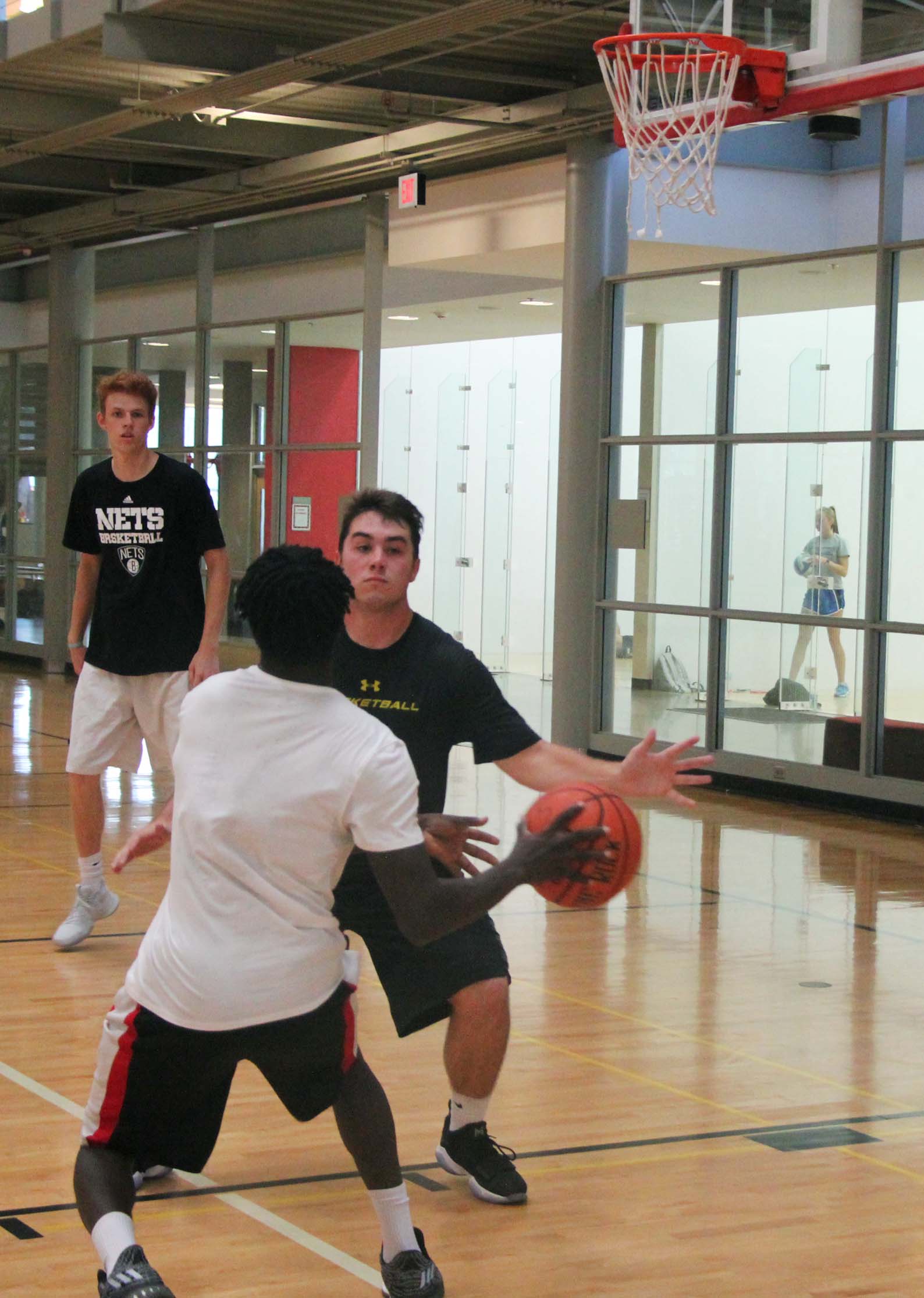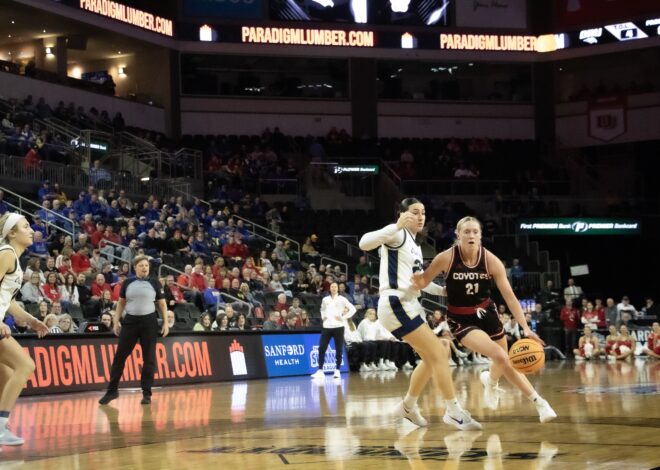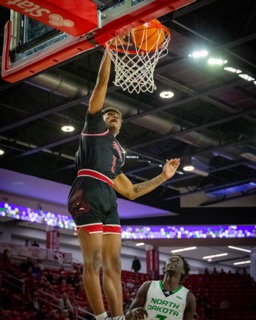
Intramural sport leagues expected to ‘max out’ this fall
A new intramural sport policy is expected to increase student involvement this year.
Last fall, the South Dakota Board of Regents passed a policy which prohibits colleges from charging students for participating in intramural activities.
Connor Singhisen, assistant director of Wellness Center intramurals & sport clubs, said he believes this policy will attract more students.
“We anticipate an uptick in the number of teams and participants, as cost was one of the deterrents to student participation,” Singhisen said. “There are still a few events that students must pay to participate in, such as golf, archery and trap shooting, as those events are held off campus at a location that charges us to use their facilities and equipment.”
Before the policy was put in place, large teams like basketball, volleyball, softball, volleyball and soccer would have to pay $25 per team. Smaller teams, like dodgeball, floor hockey and 3-on-3 basketball would pay $20.
Sophomore Kevin Lee said he enjoyed the competitive nature of intramural basketball last year.
“We took it not as a joke,” he said. “We were pretty serious about it and wanted to win, but it was still like, if you lose, it’s not the end of the world, so it was fun that way.”
Now that students aren’t paying for intramurals, money had to come from elsewhere.
“Per the Board of Regents Policy, we request additional funding from GAF (General Activity Fee), that all students pay based on the credit hours they are enrolled in,” Singhisen said. “Previously, we were not allowed to request funding from the GAF for the intramural program. In a roundabout way, students are still paying intramural team fees, but it is now split among the entire student population, whether they participate or not.”
Singhisen said he hopes that if students know that they’re already paying for it, more will take advantage of the 34 events offered this year.
Along with eliminating fees, the Wellness Center revised its policy to simplify the process of joining an intramural team.
Singhisen said the Wellness Center may limit how many intramural teams it accepts so that other students are able to use the facilities.
“We have employed tablets for game check-in, which will allow players to join teams up until game time, making it easier to avoid forfeiting a game and incurring the $20 forfeit fee,” Singhisen said.
Students will also be allowed to check in with any type of government-issued photo identification. Singhisen said that should help students that want to participate in outdoor sports.
The Wellness Center also removed pre-season rules meetings. These meetings required the captain of an intramural team to meet in-person for 30 minutes. Instead, intramural teams will now learn the rules through online quizzes via the IM Leagues website.
Sophomore Tanner Steineke, captain of his intramural basketball team last year, said he appreciates the new policy.
“For the basketball teams, I sat through the pre-season rules meeting and at the post-season meeting they went through more rules regarding ties and schedule,” Steineke said. “I think it is a good change, because now every player must take the quiz. For the meetings, only the captain has to attend and they had to disperse the information to his or her teammates.”
Singhisen is expecting different challenges to come up as more students become involved in intramurals.
“The most important issue in my opinion is going to be facility space,” he said. “We, just like many other programs on campus, are limited in the space we have for programs to operate in. As all intramurals are free, we expect to max out every league offer, maxing out our facility space in the meantime.”
Lee said the cost was the only aspect of intramurals that students disliked, and said he “likes how it’s free this year.”
“That’s honestly probably the one thing I would’ve wanted changed and they changed it, so that was about it,” Lee said. “It’s perfect now.”


